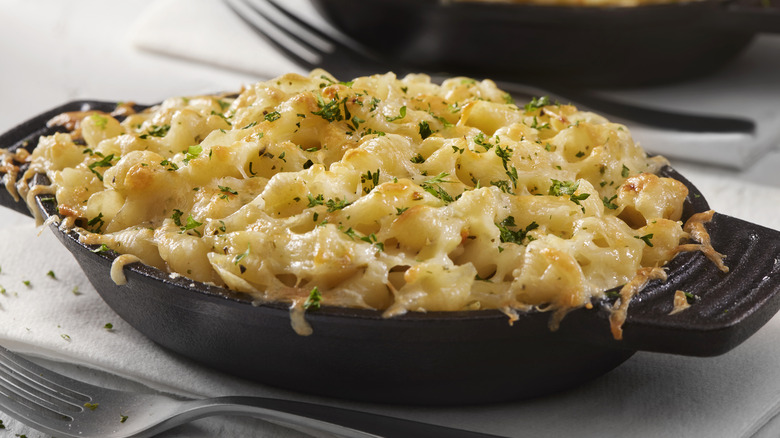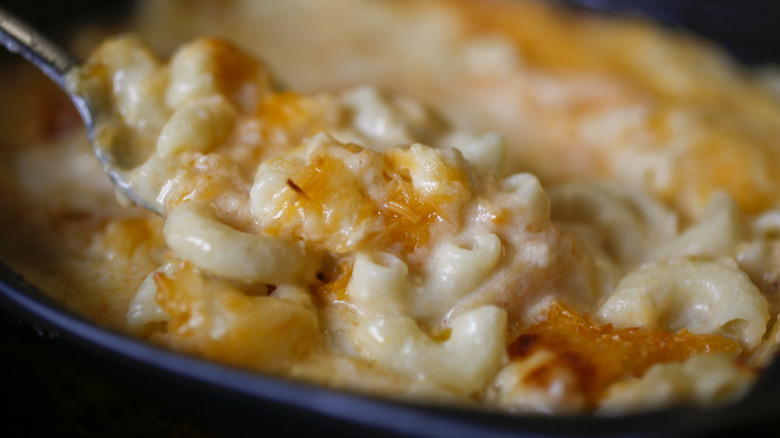The Key To Preventing Grainy Mac And Cheese Is To Cut The Heat
Plump noodles, a luxurious cheese sauce, and perhaps a little bit of char on top from an oven-baked version — this is what we picture when we think about mac and cheese. Undoubtedly a favorite among the comfort food staples, mac and cheese is a simple creation, and yet, there's an element of nuance to it that makes it more than the sum of its parts.
When making mac and cheese at home, the cheese sauce, or bechamel, is the crux of the dish. The bechamel starts as a roux of butter and flour, then milk is slowly whisked into the roux. Once combined for a creamy consistency, the cheeses of your choice are added until a thick, luxurious cheese sauce forms. However, it's at this point that home chefs can run into the disappointing and all-too-common breaking of the sauce. That once velvety sauce suddenly becomes gritty and grainy, and you're left wondering where things went wrong.
This grainy texture happens as a result of the sauce breaking, or the liquid and the fat in the sauce separating from each other and no longer emulsifying. This breakage most often happens if the sauce gets too hot. The best way to avoid your bechamel from breaking is to pull it from the heat. Let the mixture settle from any boiling or bubbling, then slowly add in your cheese, a little at a time, and let it melt completely before adding more.
When making bechamel, go slowly and avoid the additives
Controlling the heat on your bechamel is a crucial step to avoid breakage, but there are other ways to break-proof your sauce. When picking out the cheese for your bechamel, be sure to use real cheese as opposed to the "cheese food," and grate your own cheese rather than buying pre-grated. Additives such as cellulose and calcium sulfate are added to pre-grated cheeses to prevent them from clumping in the bag and from molding quickly. And while these additives are convenient for when you want a bag of shredded cheese to last in the refrigerator, when it comes to using them in a cheese sauce, they're a recipe for disaster.
Ultimately, the best way to create a creamy, dreamy bechamel for your homemade mac and cheese is to go slowly. Steadily add in your milk to your roux, allowing it to heat slowly rather than boil and burn instantly. With that same steady hand, add in your freshly grated cheese a little at a time rather than all at once, to allow the cheese to melt and not get too hot. Once you've mastered the bechamel, you can get creative. Whip up a 3-cheese mushroom mac and cheese, or spice things up with a kimchi mac and cheese.
Mac and cheese is to be savored and enjoyed, so practice that same slow-going, attention-to-detail mentality when you're making it. After that first bite of cheesy, emulsified perfection, you'll be happy you did.

